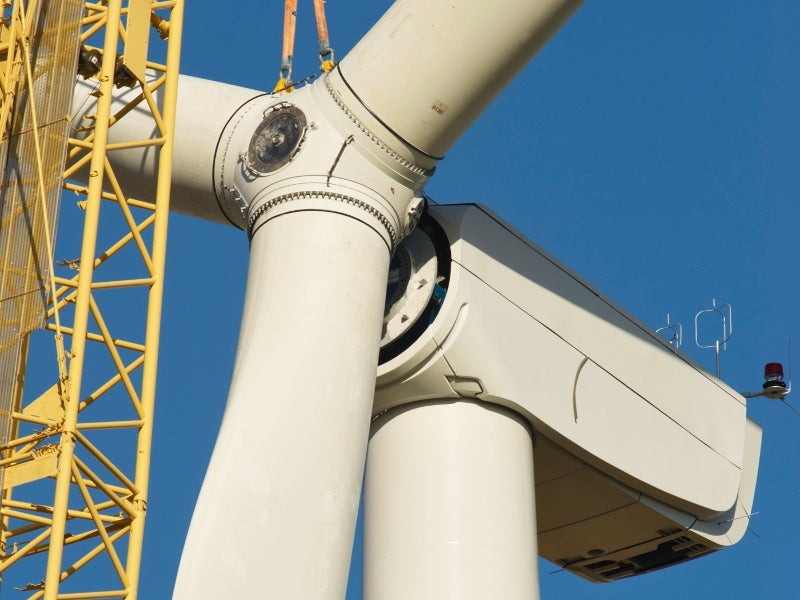
“It’s Friday. How many bald eagles did wind turbines kill today? They are an environmental & aesthetic disaster” reads a tweet sent by US President Donald Trump in 2012. While the president is not known for his informed stance towards the renewable technology, with this he touched upon a very real concern about wind turbines.
Studies in the last decade have found that windfarms do kill hundreds of thousands of birds and bats per year. As the wind power industry continues to grow in the US as the nation pushes towards a cleaner energy network, it is possible these figures are now in the millions. But there is hope as researchers and manufacturers are stepping up to the challenge.

Discover B2B Marketing That Performs
Combine business intelligence and editorial excellence to reach engaged professionals across 36 leading media platforms.
A whistle for bats
A group of researchers from Texas A&M University and the University of Massachusetts Amherst have worked on what they call a ‘unique passive acoustic whistle’ to reduce the number of bats being killed by wind turbines.
Modelled on a bats larynx and produced using 3D printing, the whistle uses multiharmonic tones that bats can detect at a distance of 100 metres. It will be attached to blades of the turbine rather than at the centre as it is was more effective than the alternatives, and can broadcast at a further range.
The researchers have noted that this project is still in the early stages of development, and when it becomes commercially available it will be very expensive.
Strategic Ornithological Support Services – identifying issues
In the UK, the Strategic Ornithological Support Services (SOSS) are a group that in its own words “brought together expert stakeholders to identify key ornithological issues relating to the expansion of the UK offshore wind industry.”

US Tariffs are shifting - will you react or anticipate?
Don’t let policy changes catch you off guard. Stay proactive with real-time data and expert analysis.
By GlobalDataTogether they worked on a series of recommendations on how to “address these issues and inform the planning and consenting process” and work on critical gaps in the knowledge of the effects of offshore windfarms and birds.
The group came up with a seven recommendations, which include expanding the evidence base for collision and avoidance rates and bird distributions at sea in order to make informed decisions about where to put offshore windfarms. The group also argued for the increased use of tracking technologies to monitor areas used by birds during the breeding and non-breeding seasons, as well as the migration routes of birds and their flight heights to avoid further danger.
Radar to detect incoming birds
Radar has also been used by windfarms to detect incoming birds. When it was first built in 2010, the Peñascal Wind Power Project in Texas was once the largest onshore windfarm in the world, but it is also in the way of a major bird flight path known as the Central Flyway.
So it was fitted with radar technology developed by NASA and the US airforce to detect birds from up to four miles away. It collates this with analysis of the weather conditions, so it is able to determine whether birds will be in danger of flying into the blades.
If birds are deemed to be in danger, the turbines are shut down until they have safely flown away.
Change in the wind…turbines
One of the oldest windfarms in existence is the Altamont Pass windfarm in Diablo County, California. Built in the nascent stages of windfarm technology in 1981, the farm was a danger to the local wildlife like the golden eagle, raptors and burrowing owls, killing an estimated 5,530 birds in the period 2005 to 2013 according to the Alameda County Community Development Agency.
Having faced challenges from local environmental group Audobon Society the windfarm owner NextEra Energy Resources agreed to replace the aging turbines by 2015 with modernised versions made by Salka LLC and also pay $2.5m for raptor habitat restoration.
Are Golden Eagles at risk?
In 2016, the US Government passed a law allowing companies to operate high-speed turbines with permits for up to 30 years, rather than the previous five years.
The administration also set guidelines on the number of bald eagles that could be acceptably killed or injured by companies before fines were levied, as these eagles are protected by the Bald and Golden Eagle Protection Act and the Migratory Bird Treaty Act of 1940.
The limit was set at 4,200 bald eagles per year, four times what it was previously. The government’s policy led to denunciations of the policy as a “kill list” for the American icon, even though the law also works to reduce and accurately report eagle deaths by companies.
As it stands therefore, birds along with bats are still at risk from wind turbines, but developments in radar and sonar technologies provide optimism for their protecting as the renewable becomes more commonplace.





